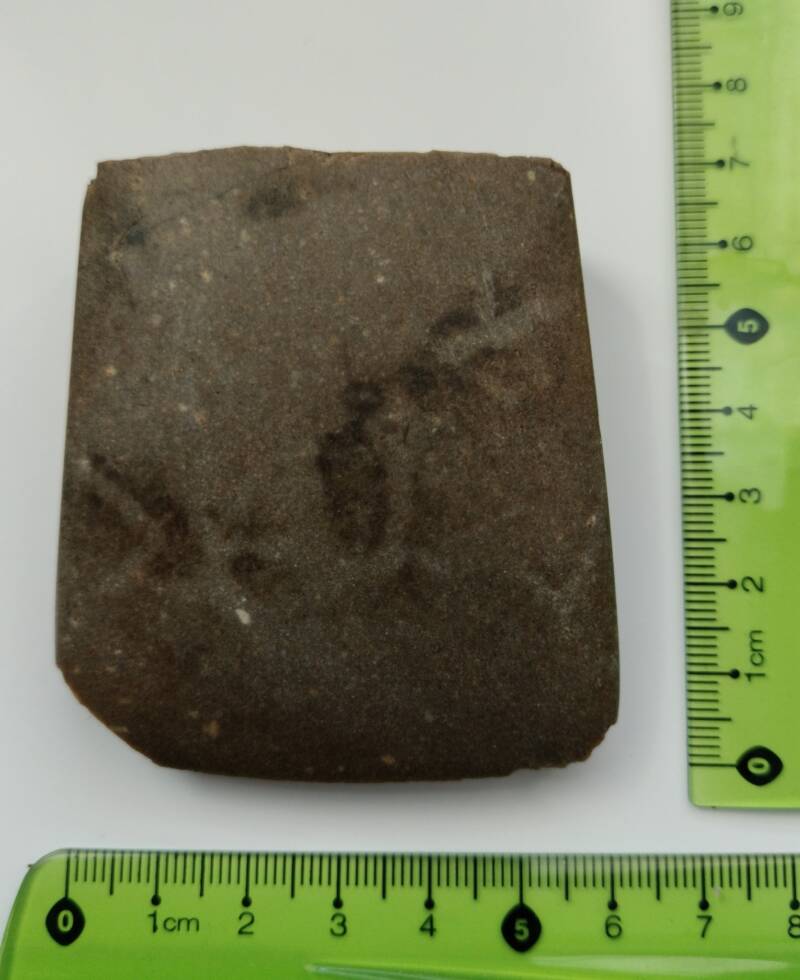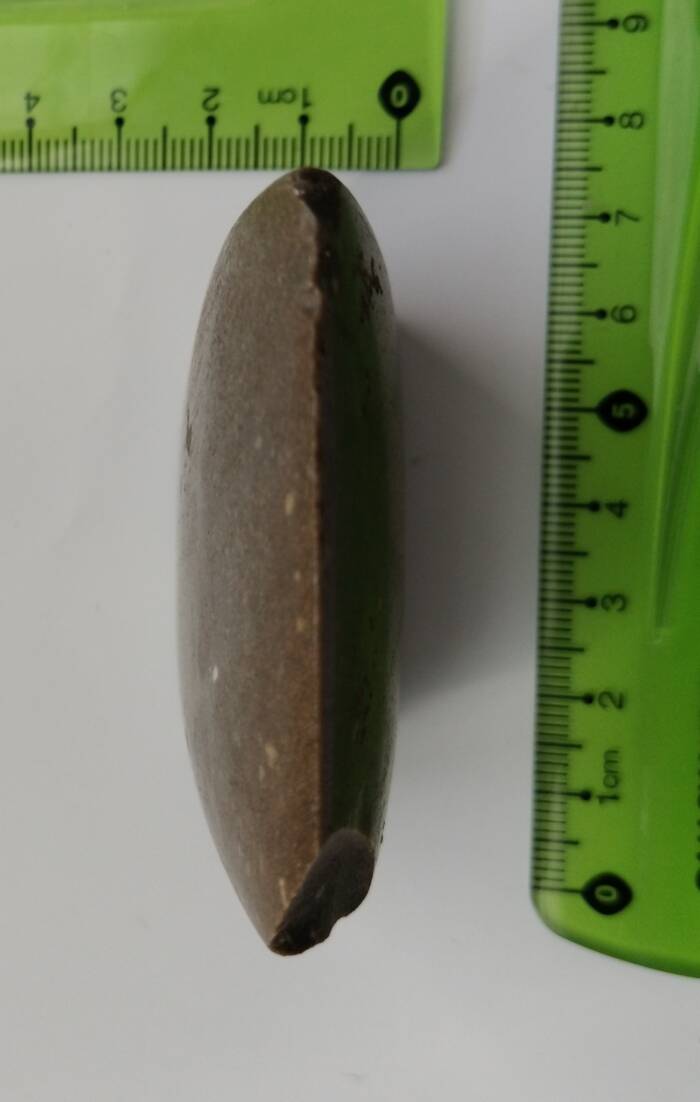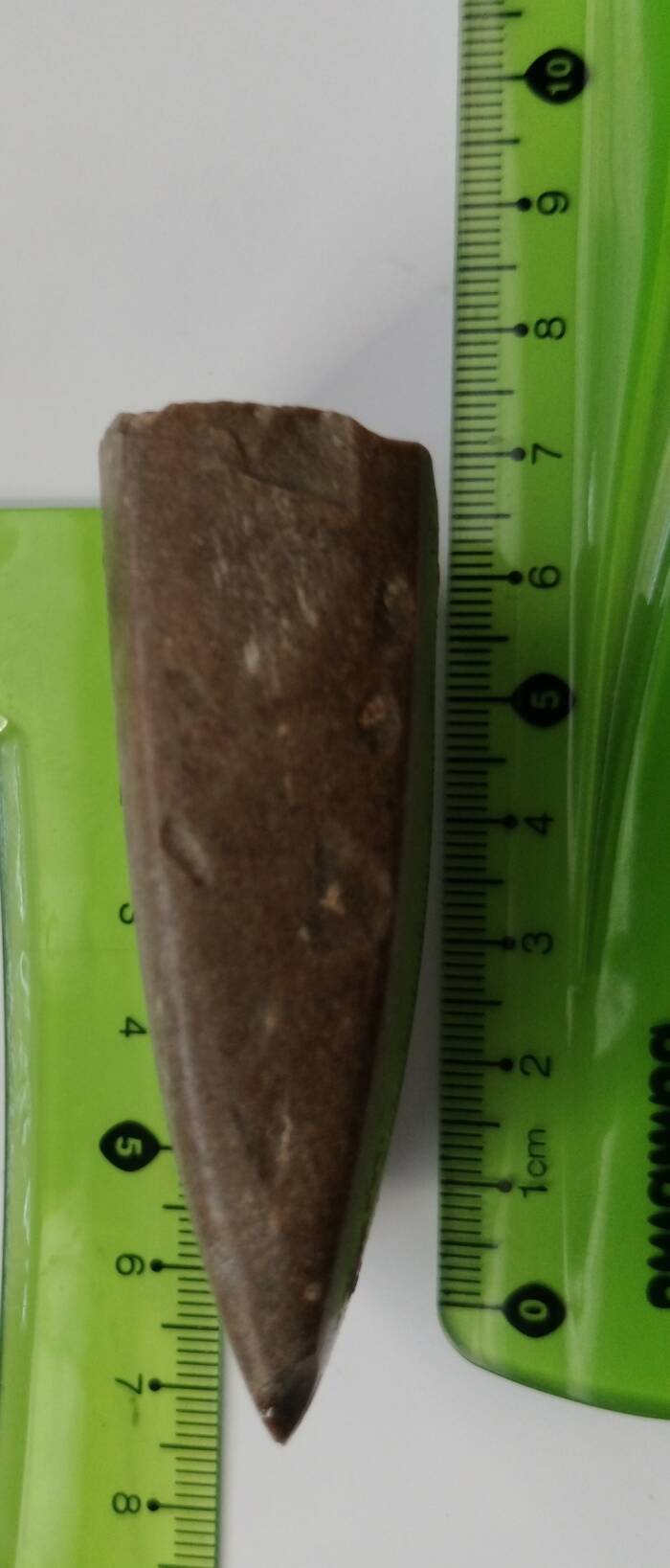Measuring 2.5 inches long, this head would have been part of an axe likely wielded by a member of the Globular Amphora culture that remains largely mysterious to this day.

Lublin Provincial Conservator of MonumentsThis smooth stone found in a Polish raspberry bush turned out to be a 4,500-year-old axe head.
While removing weeds from his raspberry patch, a Polish gardener recently discovered a smooth, wedge-shaped rock. Believing the rock held some significance, the gardener reported the find to officials.
His intuition was spot on, it turned out, as archaeologists quickly identified the smooth stone as a fragment of a 4,500-year-old axe.
The Discovery Of The Ancient Axe Head In A Raspberry Patch
Sławomir Brzozowski, a gardener in Potok Górny, Poland, found the smooth stone in late April (just weeks after a similar find of an ancient axe elsewhere in Poland) while tending to his raspberry bush. From above, it just looks like a wedge-shaped rock, albeit with a thin, almost blade-like edge. From the side, however, it looks more rectangular — in other words, not a natural shape for a rock.
The small fragment that Brzozowski found measures just about two-and-a-half inches — although officials said the complete axe would have been closer to around seven inches, per a Facebook post from the Lublin Provincial Conservator of Monuments.

Lublin Provincial Conservator of MonumentsThe sharpened edge of the axe fragment.
Archaeologists also inspected the area around Brzozowski’s raspberry bush to see if any other ancient artifacts were to be found. Unfortunately, all they uncovered were some pieces of modern pottery and two flakes of natural quartz. Still, the axe fragment, though small, offered a surprising breadth of information.
A Relic Of The Mysterious Globular Amphora Culture
The fragment, officials said, was clearly part of a larger axe, which, based on their analysis, was likely created by a Neolithic population known as the Globular Amphora culture. The Globular Amphora are a lesser-studied population whose artifacts are more commonly found throughout eastern Poland and Ukraine, so to find an axe crafted by them in this region was “very rare.”

Lublin Provincial Conservator of MonumentsThe axe fragment as seen from the side.
The Globular Amphora culture flourished between 3400 and 2800 B.C.E. It was a Neolithic society in Central and Eastern Europe, named after its distinctive pottery with globular-shaped vessels and multiple handles. Known for their burial practices, they often placed pottery and animal bones in graves, indicating some kind of ritual significance. The culture extended across parts of modern-day Poland, Germany, and Ukraine.
They were primarily pastoralists, with evidence suggesting a mix of agriculture and livestock herding. Their settlements were typically small and scattered, emphasizing mobile lifestyles. The Globular Amphora culture contributed significantly to the region’s prehistoric development, interacting with neighboring cultures and influencing subsequent Bronze Age societies.

Wikimedia CommonsA map showing the range of the Globular Amphora culture in central Europe during the Neolithic period.
More often, discoveries related to the Globular Amphora culture are found at grave sites or loosely scattered about. Officials described the discovery of this axe fragment as “a kind of sensation, which allows us to think that the population of this culture penetrated much larger areas than we thought so far.”
The discovery also provides more evidence that the Biłgoraj district, where the axe fragment was found, was not a “typical ’empty’ settlement” in the distant past, as archaeologists have commonly believed. Clearly, some type of early human settlement had been established in the region, though many details of it are still yet to be discovered.
For now, the 4,500-year-old axe fragment will be donated to the Museum in Biłgoraj and the location of its discovery will be recorded as an archaeological site.
After reading about the discovery of this ancient axe fragment, learn about the various ancient “vampire” graves discovered throughout Poland. Then, learn all about Poland’s crooked forest.





